Our state-of-the-art waste processing facility is in operation 6 days a week and processes over 15,000 tonnes of waste each month. With such high volumes of material arriving on our site, it is imperative that waste is dealt with in an organised and efficient manner once it is initially tipped. That’s why we have a wide range of employees operating at this stage of our waste process, including Plant Drivers, Grab operators and General Labourers.
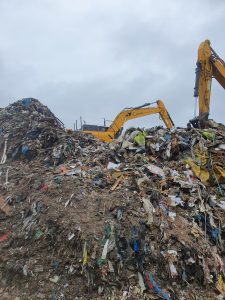
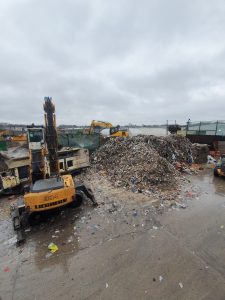
As Manchester’s leading construction and demolition (C+D) waste management company, it is common for us to receive multiple waste streams in an individual skip. Some of these materials can be identified by our Grab Operators and Labourers. These contents can then be removed from the initial unprocessed pile soon after it has been tipped. These materials often include metals and wood as we have separate waste piles for these particular streams. After being separated by our staff, the materials can begin to be processed in an effective manner.
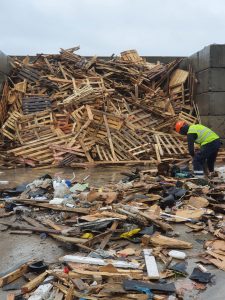
As wood is removed from various waste piles, it is separated and graded according to its type. This grade determines what can be done with it by the recyclers that we transfer our wood to. Our grade A+ wood, such as unpainted pallets and virgin softwood joists, are recycled into pet bedding. Grade A wood, such as painted softwood, is recycled into poultry bedding, grade B wood, such as chipboard and plywood is recycled into more sheet panel products which can be used within the construction industry and finally, grade C wood, such as laminate flooring and worktops, are incinerated at a biomass facility which produces electricity. This produces a sustainable alternative to dirty energy sources as well as helping to reduce our own carbon footprint. Our 4 different wood piles are often visible towards the front of our site.
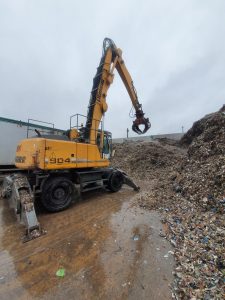
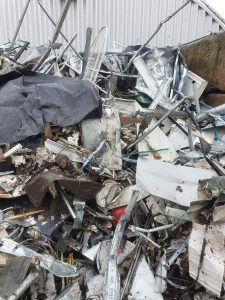
Large components of metal are also removed at this stage of our waste process. Non-ferrous metals, such as aluminium and tin, are often softer and more malleable than ferrous metals, such as iron and steel. The key difference between these metals is their magnetism. Ferrous metals are magnetic, meaning that smaller pieces can be picked up by magnets later on in the process, whereas non-ferrous metals must be picked by hand. After the initial separation, the different types of metals are then aggregated into stockpiles and sold to scrap metal dealers who feed larger scale reprocessing plants.
The materials not separated at this stage of our process will be transferred to the larger pile of unprocessed waste. This is done by our plant drivers, who push the waste towards the back of the tipping yard. Denser materials, such as bricks, are transported straight to this pile and lighter material is put through a pre-shedder before also arriving there. The waste is then ready to enter our trommel and wider internal process.
Look out for or next blog in the series where we will be explaining the trommel in greater detail as we take you behind the scenes of this interesting type of machinery.


